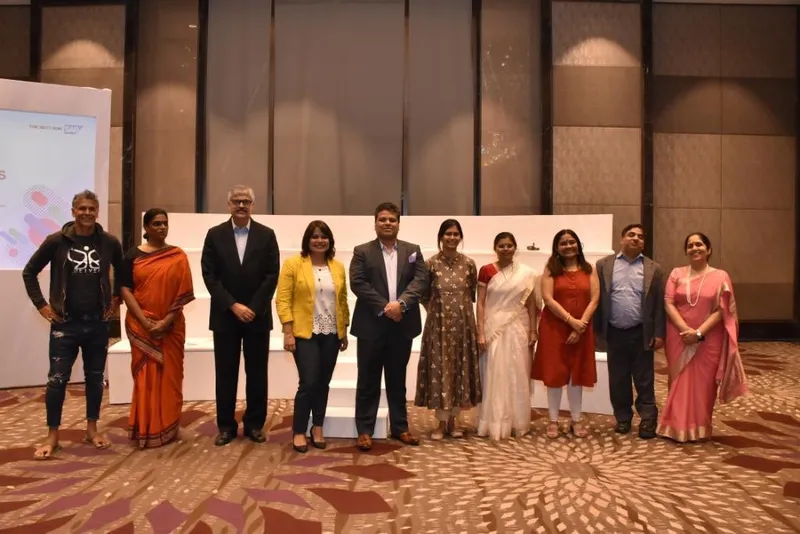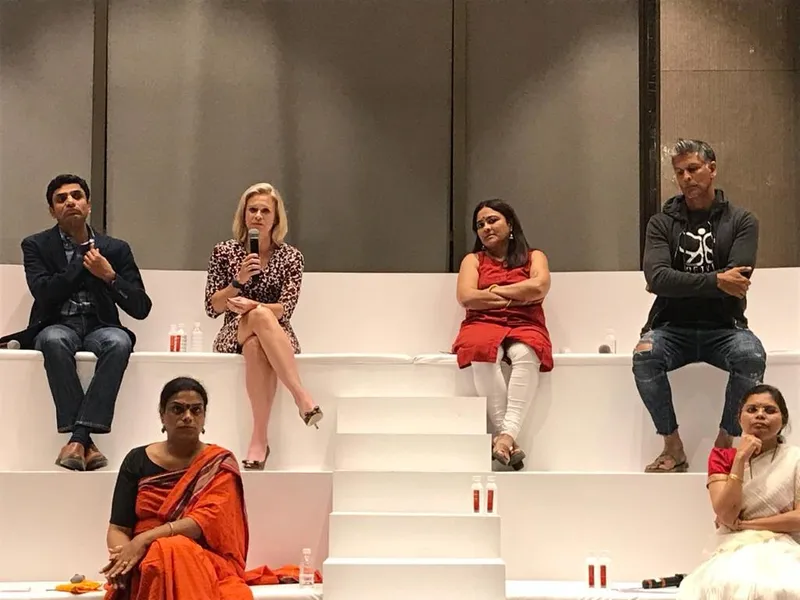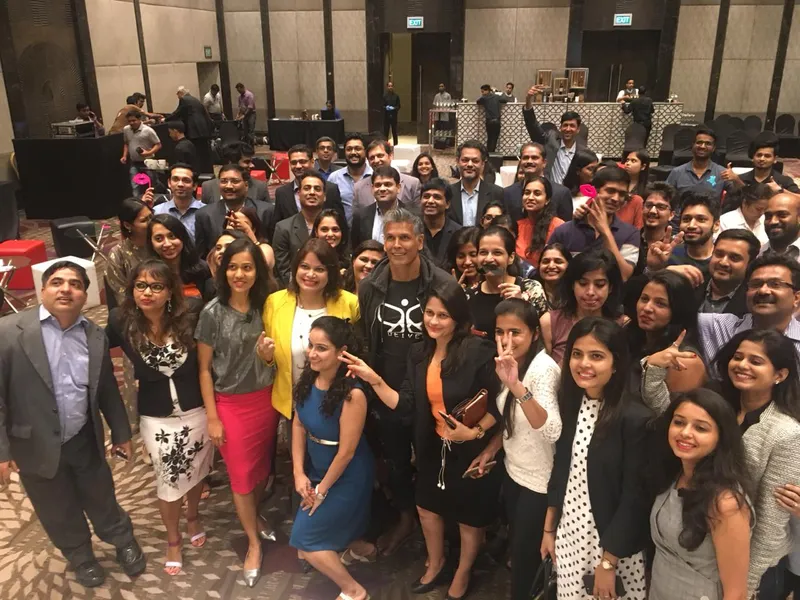#BusinessBeyondBias: SAP India brings together industry leaders, social activists and celebrities to initiate dialogue on diversity and inclusion
In July this year, in a survey titled ‘India’s Best Companies To Work’ for, SAP India topped the list. The organisation was recognised for its employee-centric policies, diversity and inclusion initiatives, and overall efforts in building a friendlier workplace.

To begin with, a recent tweet stated some industry statistics for context:
Nearly 98,000 leaders on LinkedIn believe that they can bring about innovation in their organisations. However, only 1,029 of them say they can actually execute it. This disparity laid bare the huge gap between thought and action, something we see often reflected in workplaces in India, so many of which have bias and non-inclusiveness entrenched so deeply, it’s part of the system. This is often because people carry these attitudes to the workplace from outside.
To further the conversation around diversity and inclusion (D&I), SAP India recently organised a cross industry platform to open an dialogue on ‘Business Beyond Bias’ in Mumbai. The panel was flanked by influential corporate leaders and decision-makers, gender rights activists and celebrities, scientists and doctors, etc.
Vice President, Strategic Customer Program, Kamolika Peres, , SAP Indian Subcontinent, opened the floor for an open and lively debate. With D&I initiatives having hit a certain plateau across organisations, the idea was to redefine the usual conversation around the topic.
As the Executive Sponsor and champion of Diversity and Inclusion initiatives, Kamolika maneuvered the topic to cover all facets surrounding and hindering inclusion at workplace and the society at large. The panelists addressed a wide array of issues ranging from the ‘bro culture’ in corporate India and the need for more women in the C-suite, to an organisation’s ability to take a comprehensive view of inclusivity, and its leaders’ appetite for innovation and risk-taking.
Ritu Anand, Vice President & Deputy Head-Global HR of Tata Consultancy Services spoke about her role in the company and the changes in workforce over the years. From changing employment models and career progression graphs to addressing generational gap, she delved into the various challenges faced by CHROs in the current scenario. “Diversity is given – Inclusion is a choice. In TCS – 85% of the workforce is young – they teach us what needs to be done. Hence, we believe in and are constantly working towards outcome driven initiatives.”, she said.
Mahindra Lifespaces CEO Sangeeta Prasad said that bias against people who were ‘unlike us’ is often a function of one’s culture and upbringing. Drawing from her personal experiences, she said, “I grew up in an inclusive and diverse environment. That upbringing has had an indelible impact on me, and that is reflected in the work I do.”
She added that an inclusive workplace is all about “an environment where everyone is comfortable.”
Prabir Jha, Global Chief People Officer at Cipla, stressed on the subtle difference between diversity and inclusion. “Diversity is being invited to the party, inclusion is being asked to dance,” he said. “Diversity is not about equality. It is about equity. That is what results in inclusion. And it is the role of leaders to show that intent,” he added.
How easy or difficult is it for corporate leaders to bring about policies that are gender-neutral, friendly for the specially abled, and truly inclusive?
It may not be all that easy, the panel opined. After all, diversity and inclusion cannot be linked to “quarter-on-quarter results”, and there is no succinct way to measure impact.

Vasant Sanszgiri, Group Head Human Resources, Shapoorji Pallonji Group, said, “Would you want to bring someone who will build a culture that fosters innovation versus someone who gives you results? We have to make a start somewhere. Guts and conviction is needed.”
He quoted a World Economic Forum report which says it would take 170 years to achieve complete gender parity in organisations.
Krish Shankar, Group Head - Human Resources, Infosys, observed: “ Change won’t come unless you have a critical mass. Leaders have to use emotional intelligence and set some values. They have to look at the expectations of people, have empathy. You can't really mandate this. But, we have to create awareness and buzz.”
Krish revealed that Infosys has about a 100,000 men in sales, and it has been a “struggle” to get women in that department. “Unless you have a 20-25 percent diversity in an organisation, things won’t change,” he said.
Ishani Roy, scientist and Founder of Serein (which uses data and behavioural science to offer diversity solutions for enterprises), said that organisational bias is not always explicit, but even then, it is harmful. She said, “If we are not exposed to different types of people in life, we will always have subconscious bias. Quantifying bias is not easy.”
Many organisations fail to gauge why women join the workforce in the first place. ‘Do they really need to?’ Believe it or not, this is still a question many women are asked during interviews. YourStory Editor Tanvi Dubey (one of the panelists) put it well, “Women aren't pursuing hobbies. They are here because they have the skills and talent.”
While the panel focused on diversity and inclusion in the workforce, ShreeGauri Sawant, celebrated transgender activist, batted for LGBTQ rights. “Why should I be a separate column? I am a human first, a transgender later. Change your mindset,” she said.
In 2014, Gauri made news when she became the first transgender person to file a petition in the Supreme Court for adoption rights for transgenders. Her adoption of an orphaned girl named Gayatri made international news. “I believe motherhood is a behaviour… to care and to love. I don’t need to give birth to become a mother,” she said.
Because society is judgmental and non-inclusive, most workplaces tend to mimic that behaviour.
Rachel Barger, Chief Operating Officer – SAP (Asia Pacific and Japan), said: “There is a lot of expectation from women. As organisations, how do we create a space where everyone can be their authentic selves? That’s all... make space for people.”
And space is what actor, model, and runner Milind Soman created with Pinkathon, which began as a small marathon for women runners in 2012, but has now turned into a nationwide movement spanning 65 cities in India.
Milind said, “We found that the percentage of women runners was very low in all marathons. So, we organised the first Pinkathon run in Mumbai in 2012. We had 2,000 participants. Then we took it to eight other cities, and 65,000 women were running.”

The two-hour SAP dialogue highlighted two important facts to move on to Diversity 2.0:
Two things drive diversity and inclusion in the workplace. One, leadership’s empathy and awareness about a need, and, two, its intent and intensity in addressing it.
The event was then concluded by Deb Deep Sengupta, President and Managing Director, SAP Indian Subcontinent, on an encouraging note, “To be able to be a global company there are two things that matter - Purpose and Promise. SAP's purpose is to help run the world better and the promise is to eliminate workplace bias.”







